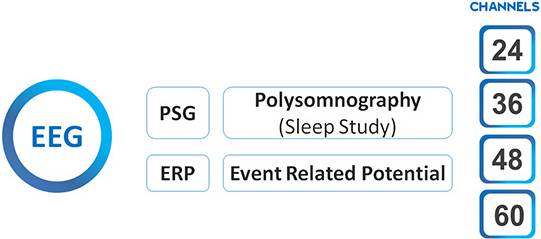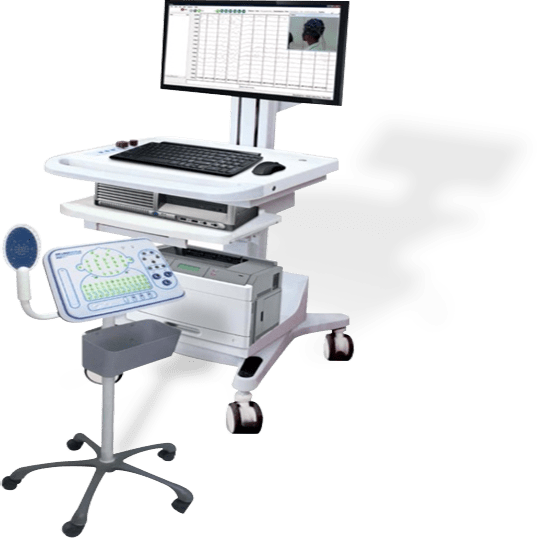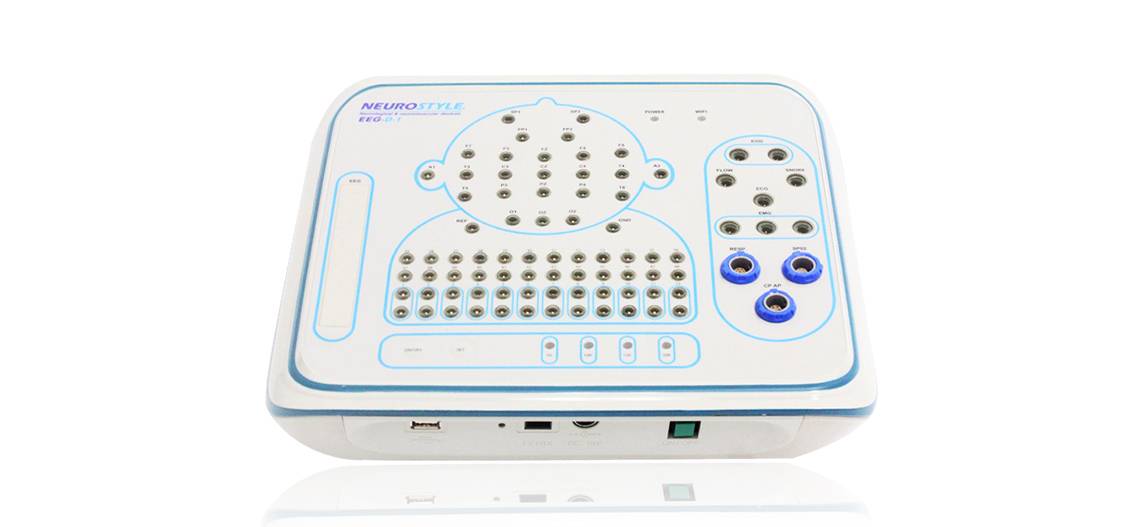The electroencephalogram or EEG is a diagnostic test that is performed to detect irregularities and abnormalities in brain waves and to study cognitive processes. Electroencephalography is an electrophysiological process through which the electrical signals of the brain are recorded and finally a clear picture of the brain’s electrical activity is created, which is then used for diagnosis of potential brain disorder and its symptoms.
EEG system is mainly used to investigate and detect symptoms of disorders like epilepsy, seizures, head injury, encephalitis, brain tumor and several other brain disorders like memory problem, sleep disorders, stroke, dementia and so on. Other than medical diagnosis, EEG is also used for neurobiological research.
An EEG machine or system includes essential components like electrodes, amplifiers, a computer control module, and a display device. The entire system scans electrical activity of the brain by measuring voltage changes that come from ionic current within and between neurons or nerve cells. The scans are performed by placing metal disc or cup-shaped electrodes — on the scalp. These electrodes pickup electric signals in the brain and record the brain activity. Then the EEG signals picked up by electrodes are amplified by amplifiers and finally digitized by a computer control module before storing and data processing. At last, the processed brain data is displayed on a monitor device for further evaluation by a neurophysiologist.
What happens during an EEG?
An EEG machine or system includes essential components like electrodes, amplifiers, a computer control module, and a display device. The entire system scans electrical activity of the brain by measuring voltage changes that come from ionic current within and between neurons or nerve cells. The scans are performed by placing metal disc or cup-shaped electrodes — on the scalp. These electrodes pickup electric signals in the brain and record the brain activity. Then the EEG signals picked up by electrodes are amplified by amplifiers and finally digitized by a computer control module before storing and data processing. At last, the processed brain data is displayed on a monitor device for further evaluation by a neurophysiologist.
Here is the general process of EEG, which one can expect to be performed by a healthcare provider during an EEG procedure :
- The patient will be asked to lie on a bed or relax on a reclining chair.
- The technician will measure the dimensions of the patient’s head and mark the scalp with a special pencil to show spots where electrodes will be attached.
- The EEG technician will attach disc or cup-shaped metal electrodes to the identified spots using a special adhesive. Sometimes, an elastic cap containing the electrodes will be used instead.
- Now the patient will be asked to close eyes and relax in a comfortable position. The patient needs to remain still throughout the EEG test, which typically takes up to 60 minutes. At various times, the technician may monitor the patient to observe any undesired movements that can cause erroneous reading, like blinking or swallowing. The recording may be paused periodically to let the patient rest or reposition himself.
- After initial recording is being completed at rest position, to test brain waves activity that does not show up while a body is resting, the EEG technician may ask the patient to open and close eyes, perform a few simple calculations, read a paragraph, look at a picture, breathe deeply for a few minutes, or may expose him to a bright flashing light.
- Video recording will be done routinely during the EEG session. This will allow capturing body motions while recoding brain waves. The combined recording will help the doctor in diagnosing and treating the condition.
EEG may be done while one is asleep, if he is being evaluated for a sleep disorder. Ambulatory EEGs (aEEGs) is done in cases where prolonged monitoring is not possible inside a hospital or lab setting.
What happens after an EEG?
After the test is completed, the technician will detach the electrodes or cap and the electrode paste will be washed off with warm water, witch hazel, or acetone. Sometimes, you may need to wash your hair again at home. If the patient is given no sedative, he should not feel any side effects after the procedure, and can return to his normal routine.
If the patient takes any sedatives for the test, it will take time for the medication to wear off, and he will be required to rest until the sedatives have worn off. He shouldn’t drive for the rest of the day.


